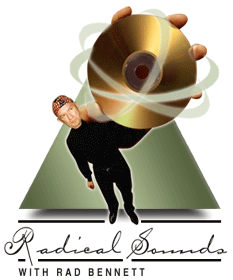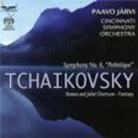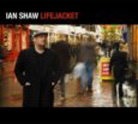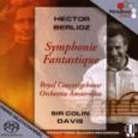| May 1, 2008
Is There Multichannel in High-End Audio's Future?
 As far back as Walt
Disney’s Fantasia (1940), sound engineers were trying to achieve surround
sound. Other experiments were tried off and on until we reached the Quadraphonic era of
the 1970s, when all major labels (and a lot of minor ones) recorded some sessions in four
channels: left and right front, and left and right rear. But vinyl proved a poor medium
for reproducing the sound of those quad master tapes in the home. Quad faded, and then
emerged a plethora of black boxes that would produce pseudo surround. Some of these were
quite effective, others bizarre, but all of them proved that many people in the audio
community, buyers and sellers alike, were interested in multichannel music. When laserdisc
and DVD came along, surround sound rapidly became standard for home theaters. But even
though SACD and DVD-Audio are reliable consumer formats through which to provide surround
and center audio channels, it didn’t catch on, becoming only a niche market. As far back as Walt
Disney’s Fantasia (1940), sound engineers were trying to achieve surround
sound. Other experiments were tried off and on until we reached the Quadraphonic era of
the 1970s, when all major labels (and a lot of minor ones) recorded some sessions in four
channels: left and right front, and left and right rear. But vinyl proved a poor medium
for reproducing the sound of those quad master tapes in the home. Quad faded, and then
emerged a plethora of black boxes that would produce pseudo surround. Some of these were
quite effective, others bizarre, but all of them proved that many people in the audio
community, buyers and sellers alike, were interested in multichannel music. When laserdisc
and DVD came along, surround sound rapidly became standard for home theaters. But even
though SACD and DVD-Audio are reliable consumer formats through which to provide surround
and center audio channels, it didn’t catch on, becoming only a niche market.
Why do we demand surround sound for movies but condemn it
for audio? The American composer Charles Ives would be shocked. No doubt surround sound
would have intrigued him, as it does many musicians. But the audio public seems devoted to
listening to music in only two channels. Almost none of the new digital audio formats
provide for anything but stereo, and I haven’t heard many encouraging words saying
that it is coming. Several smaller labels are very interested, such as AIX and 2L, but the
majors have done nothing but yawn. It would be interesting to have a few letters here,
both from those who want multichannel music and those who don’t. Speak out,
’cause I just don’t get it.
What I do get is that, for this quarter, I have three
recordings to present to you that are musts. Whether you listen to them on CD, two-channel
SACD, or in the full splendor of surround sound, these recordings deliver:
Tchaikovsky: Symphony No.6,
"Pathétique"; Romeo and Juliet
Cincinnati Symphony; Paavo Järvi, conductor.
Telarc SACD-60661, Hybrid Multichannel SACD.
 There are dozens of
recordings of both of these works in the catalog, many of them excellent. But this one is
special, particularly the Romeo and Juliet. From the first measures, one is aware
of a taut drama unfolding, as the clarinets and bassoons set a somber stage of
expectation. Järvi pays particular attention to the accents on each of the ensuing
entrances of the cellos, double basses, horn, and so on, and every second of the
introduction is fraught with drama and purpose. As he then moves into the livelier
sections of the work, the tension never lets up. Even the romantic interludes with the
"big tune" are edgy, reminding one more of passion than of love. The Symphony
No.6 is given the same care -- Järvi pays attention to detail while never letting it get
in the way of the bigger picture. These readings catapult to the top of each work’s
list. The sound, too, is superb, and on its own is reason enough to listen. The bass is
solid, with exceptional definition and weight. The soundstage is deep, yet the presence of
all instruments is impressive. The brass are singularly sonorous, and the sound of the
timpani is full yet clearly delineated. The two-channel version is quite something, but
the multichannel SACD is as close to a perfect recording as you’re liable to hear
these days. There are dozens of
recordings of both of these works in the catalog, many of them excellent. But this one is
special, particularly the Romeo and Juliet. From the first measures, one is aware
of a taut drama unfolding, as the clarinets and bassoons set a somber stage of
expectation. Järvi pays particular attention to the accents on each of the ensuing
entrances of the cellos, double basses, horn, and so on, and every second of the
introduction is fraught with drama and purpose. As he then moves into the livelier
sections of the work, the tension never lets up. Even the romantic interludes with the
"big tune" are edgy, reminding one more of passion than of love. The Symphony
No.6 is given the same care -- Järvi pays attention to detail while never letting it get
in the way of the bigger picture. These readings catapult to the top of each work’s
list. The sound, too, is superb, and on its own is reason enough to listen. The bass is
solid, with exceptional definition and weight. The soundstage is deep, yet the presence of
all instruments is impressive. The brass are singularly sonorous, and the sound of the
timpani is full yet clearly delineated. The two-channel version is quite something, but
the multichannel SACD is as close to a perfect recording as you’re liable to hear
these days.
Ian Shaw: Lifejacket
Linn AKD 311, Hybrid Multichannel SACD.
 Drawn to All Things [Linn AKD
276], the first Linn release by UK jazz singer Ian Shaw, was a stunning and surprising
collection of songs by Joni Mitchell, and established for collectors what most of the jazz
world already knew: Shaw is the best male jazz vocalist since Mel Tormé. If you
don’t buy that sweeping statement, listen to Lifejacket, which I think is the
best recording of 2008 so far -- to unseat it, something incredible will have to come
along. Shaw’s voice knows no limit of virtuosity. He uses a lot of falsetto, but only
when it is appropriate, and can also sing in a deep voice reminiscent of Nat
"King" Cole’s. When Shaw was named Best Male Vocalist at the 2007 BBC Jazz
Awards, the judges knew what they were doing. Drawn to All Things [Linn AKD
276], the first Linn release by UK jazz singer Ian Shaw, was a stunning and surprising
collection of songs by Joni Mitchell, and established for collectors what most of the jazz
world already knew: Shaw is the best male jazz vocalist since Mel Tormé. If you
don’t buy that sweeping statement, listen to Lifejacket, which I think is the
best recording of 2008 so far -- to unseat it, something incredible will have to come
along. Shaw’s voice knows no limit of virtuosity. He uses a lot of falsetto, but only
when it is appropriate, and can also sing in a deep voice reminiscent of Nat
"King" Cole’s. When Shaw was named Best Male Vocalist at the 2007 BBC Jazz
Awards, the judges knew what they were doing.
Shaw is also an incredible songwriter. With one exception
-- a successful reinvention of Rozz Williams’ "Flowers" -- Shaw sings
originals mostly cowritten with guitarist David Preston, as well as two tunes he penned
entirely by himself. His lyrics are conversational in style, and raw in their baring of
his inner self.
As is to be expected, Linn has recorded Shaw well. The
two-channel version is perfectly fine, clean and clear as can be, with good balances all
the way around. The multichannel tracks, however, anchor that incredible voice in the
center channel (in the two-channel mix it occasionally wanders a little) and gives the
virtuoso instrumentalists a chance to shine. Usually, a multichannel mix opens up the
sound and makes it more transparent. This one thickens things up a bit without marring the
transparency of the two-channel mix. For lack of a better descriptor, the multichannel
sound is beefier, with a lot more presence. But however many of channels you use,
don’t miss this disc.
Berlioz: Symphonie Fantastique
Royal Concertgebouw Orchestra; Sir Colin Davis, conductor.
PentaTone 5186 184, Hybrid Multichannel SACD.
 Sir Colin Davis has recorded Symphonie
Fantastique no fewer than four times, and in three of those recordings has used
multichannel techniques. Of the latter, this one, recorded in January 1974, is the best.
Its very lyrical feel doesn’t slight the drama embedded in these five movements, and
the orchestral playing is breathtaking. At the time, the Concertgebouw was one of the five
greatest orchestras in the world, and it’s easy to understand that elevated status
when listening to the astonishing playing here. PentaTone has licensed Philips’
Quadraphonic master tapes and wisely retained their 4.0-channel mix, as the original
Philips engineers knew very well what they were doing: It’s hard to believe that this
radiant recording is now over 30 years old. There’s a lot of ear candy here: a
perfect balance of harp, cornet, and orchestra in Un bal; the distant and
not-so-distant rolling thunder of the timpani at the end of the Scène aux champs;
and the mournfully tolling church bell at a climatic point of the final movement. The
sound of the string basses merits special mention: Seldom do you hear such clean
articulation in those lowest registers. Overall, the soundstage has great width and depth.
The two-channel versions, CD and SACD, are excellent, but this disc also makes a good case
for multichannel sound: the music leaps to life in a way that makes the two-channel
versions sound pallid and flat. Sir Colin Davis has recorded Symphonie
Fantastique no fewer than four times, and in three of those recordings has used
multichannel techniques. Of the latter, this one, recorded in January 1974, is the best.
Its very lyrical feel doesn’t slight the drama embedded in these five movements, and
the orchestral playing is breathtaking. At the time, the Concertgebouw was one of the five
greatest orchestras in the world, and it’s easy to understand that elevated status
when listening to the astonishing playing here. PentaTone has licensed Philips’
Quadraphonic master tapes and wisely retained their 4.0-channel mix, as the original
Philips engineers knew very well what they were doing: It’s hard to believe that this
radiant recording is now over 30 years old. There’s a lot of ear candy here: a
perfect balance of harp, cornet, and orchestra in Un bal; the distant and
not-so-distant rolling thunder of the timpani at the end of the Scène aux champs;
and the mournfully tolling church bell at a climatic point of the final movement. The
sound of the string basses merits special mention: Seldom do you hear such clean
articulation in those lowest registers. Overall, the soundstage has great width and depth.
The two-channel versions, CD and SACD, are excellent, but this disc also makes a good case
for multichannel sound: the music leaps to life in a way that makes the two-channel
versions sound pallid and flat.
...Rad Bennett
radb@ultraaudio.com

All contents copyright Schneider Publishing Inc., all rights
reserved.
Any reproduction, without permission, is prohibited.
Ultra Audio is part of the SoundStage! Network.
A world of websites and publications for audio, video, music, and movie enthusiasts. |

 As far back as Walt
Disney’s Fantasia (1940), sound engineers were trying to achieve surround
sound. Other experiments were tried off and on until we reached the Quadraphonic era of
the 1970s, when all major labels (and a lot of minor ones) recorded some sessions in four
channels: left and right front, and left and right rear. But vinyl proved a poor medium
for reproducing the sound of those quad master tapes in the home. Quad faded, and then
emerged a plethora of black boxes that would produce pseudo surround. Some of these were
quite effective, others bizarre, but all of them proved that many people in the audio
community, buyers and sellers alike, were interested in multichannel music. When laserdisc
and DVD came along, surround sound rapidly became standard for home theaters. But even
though SACD and DVD-Audio are reliable consumer formats through which to provide surround
and center audio channels, it didn’t catch on, becoming only a niche market.
As far back as Walt
Disney’s Fantasia (1940), sound engineers were trying to achieve surround
sound. Other experiments were tried off and on until we reached the Quadraphonic era of
the 1970s, when all major labels (and a lot of minor ones) recorded some sessions in four
channels: left and right front, and left and right rear. But vinyl proved a poor medium
for reproducing the sound of those quad master tapes in the home. Quad faded, and then
emerged a plethora of black boxes that would produce pseudo surround. Some of these were
quite effective, others bizarre, but all of them proved that many people in the audio
community, buyers and sellers alike, were interested in multichannel music. When laserdisc
and DVD came along, surround sound rapidly became standard for home theaters. But even
though SACD and DVD-Audio are reliable consumer formats through which to provide surround
and center audio channels, it didn’t catch on, becoming only a niche market. There are dozens of
recordings of both of these works in the catalog, many of them excellent. But this one is
special, particularly the Romeo and Juliet. From the first measures, one is aware
of a taut drama unfolding, as the clarinets and bassoons set a somber stage of
expectation. Järvi pays particular attention to the accents on each of the ensuing
entrances of the cellos, double basses, horn, and so on, and every second of the
introduction is fraught with drama and purpose. As he then moves into the livelier
sections of the work, the tension never lets up. Even the romantic interludes with the
"big tune" are edgy, reminding one more of passion than of love. The Symphony
No.6 is given the same care -- Järvi pays attention to detail while never letting it get
in the way of the bigger picture. These readings catapult to the top of each work’s
list. The sound, too, is superb, and on its own is reason enough to listen. The bass is
solid, with exceptional definition and weight. The soundstage is deep, yet the presence of
all instruments is impressive. The brass are singularly sonorous, and the sound of the
timpani is full yet clearly delineated. The two-channel version is quite something, but
the multichannel SACD is as close to a perfect recording as you’re liable to hear
these days.
There are dozens of
recordings of both of these works in the catalog, many of them excellent. But this one is
special, particularly the Romeo and Juliet. From the first measures, one is aware
of a taut drama unfolding, as the clarinets and bassoons set a somber stage of
expectation. Järvi pays particular attention to the accents on each of the ensuing
entrances of the cellos, double basses, horn, and so on, and every second of the
introduction is fraught with drama and purpose. As he then moves into the livelier
sections of the work, the tension never lets up. Even the romantic interludes with the
"big tune" are edgy, reminding one more of passion than of love. The Symphony
No.6 is given the same care -- Järvi pays attention to detail while never letting it get
in the way of the bigger picture. These readings catapult to the top of each work’s
list. The sound, too, is superb, and on its own is reason enough to listen. The bass is
solid, with exceptional definition and weight. The soundstage is deep, yet the presence of
all instruments is impressive. The brass are singularly sonorous, and the sound of the
timpani is full yet clearly delineated. The two-channel version is quite something, but
the multichannel SACD is as close to a perfect recording as you’re liable to hear
these days. Drawn to All Things [Linn AKD
276], the first Linn release by UK jazz singer Ian Shaw, was a stunning and surprising
collection of songs by Joni Mitchell, and established for collectors what most of the jazz
world already knew: Shaw is the best male jazz vocalist since Mel Tormé. If you
don’t buy that sweeping statement, listen to Lifejacket, which I think is the
best recording of 2008 so far -- to unseat it, something incredible will have to come
along. Shaw’s voice knows no limit of virtuosity. He uses a lot of falsetto, but only
when it is appropriate, and can also sing in a deep voice reminiscent of Nat
"King" Cole’s. When Shaw was named Best Male Vocalist at the 2007 BBC Jazz
Awards, the judges knew what they were doing.
Drawn to All Things [Linn AKD
276], the first Linn release by UK jazz singer Ian Shaw, was a stunning and surprising
collection of songs by Joni Mitchell, and established for collectors what most of the jazz
world already knew: Shaw is the best male jazz vocalist since Mel Tormé. If you
don’t buy that sweeping statement, listen to Lifejacket, which I think is the
best recording of 2008 so far -- to unseat it, something incredible will have to come
along. Shaw’s voice knows no limit of virtuosity. He uses a lot of falsetto, but only
when it is appropriate, and can also sing in a deep voice reminiscent of Nat
"King" Cole’s. When Shaw was named Best Male Vocalist at the 2007 BBC Jazz
Awards, the judges knew what they were doing. Sir Colin Davis has recorded Symphonie
Fantastique no fewer than four times, and in three of those recordings has used
multichannel techniques. Of the latter, this one, recorded in January 1974, is the best.
Its very lyrical feel doesn’t slight the drama embedded in these five movements, and
the orchestral playing is breathtaking. At the time, the Concertgebouw was one of the five
greatest orchestras in the world, and it’s easy to understand that elevated status
when listening to the astonishing playing here. PentaTone has licensed Philips’
Quadraphonic master tapes and wisely retained their 4.0-channel mix, as the original
Philips engineers knew very well what they were doing: It’s hard to believe that this
radiant recording is now over 30 years old. There’s a lot of ear candy here: a
perfect balance of harp, cornet, and orchestra in Un bal; the distant and
not-so-distant rolling thunder of the timpani at the end of the Scène aux champs;
and the mournfully tolling church bell at a climatic point of the final movement. The
sound of the string basses merits special mention: Seldom do you hear such clean
articulation in those lowest registers. Overall, the soundstage has great width and depth.
The two-channel versions, CD and SACD, are excellent, but this disc also makes a good case
for multichannel sound: the music leaps to life in a way that makes the two-channel
versions sound pallid and flat.
Sir Colin Davis has recorded Symphonie
Fantastique no fewer than four times, and in three of those recordings has used
multichannel techniques. Of the latter, this one, recorded in January 1974, is the best.
Its very lyrical feel doesn’t slight the drama embedded in these five movements, and
the orchestral playing is breathtaking. At the time, the Concertgebouw was one of the five
greatest orchestras in the world, and it’s easy to understand that elevated status
when listening to the astonishing playing here. PentaTone has licensed Philips’
Quadraphonic master tapes and wisely retained their 4.0-channel mix, as the original
Philips engineers knew very well what they were doing: It’s hard to believe that this
radiant recording is now over 30 years old. There’s a lot of ear candy here: a
perfect balance of harp, cornet, and orchestra in Un bal; the distant and
not-so-distant rolling thunder of the timpani at the end of the Scène aux champs;
and the mournfully tolling church bell at a climatic point of the final movement. The
sound of the string basses merits special mention: Seldom do you hear such clean
articulation in those lowest registers. Overall, the soundstage has great width and depth.
The two-channel versions, CD and SACD, are excellent, but this disc also makes a good case
for multichannel sound: the music leaps to life in a way that makes the two-channel
versions sound pallid and flat.